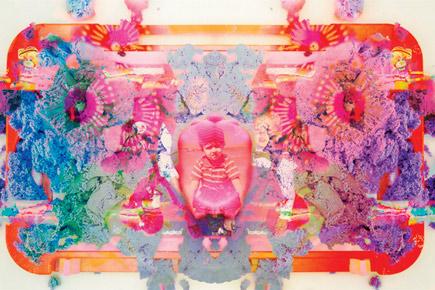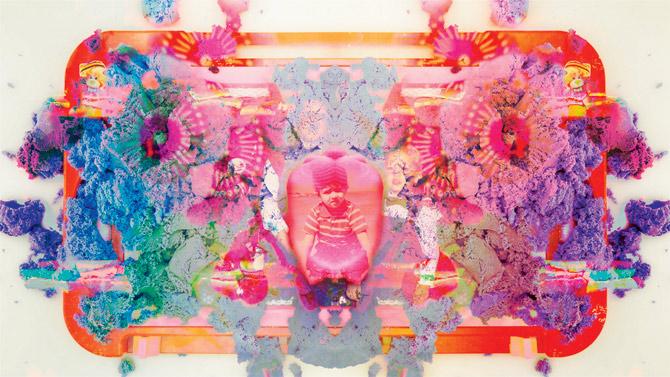NY animation artist Joey Foster Ellis and Fuzzy Logic’s Arfaaz Kagalwala storyboard 9,000 photographs for their first-ever stop-motion collaboration

 For the last five months, Joey Foster Ellis, a functional artist and craftsman from Auburn in upstate New York, has been sifting through the most bizarre collection of YouTube clips from his studio in Jingdezhen, China. Some of them include a Marathi balgeet (nursery rhyme) called Shaka Laka Boom Boom; a behind-the-scene dekko of actor Jackie Shroff using cuss words in a polio ad; a hilarious video of an Indian politician’s false teeth falling off while speaking and the foot-tapping Tamil song, Chikku Bukku Raile by AR Rahman. His home is full of a staggering 9,000 photographs that he has shot and playthings such as play-doh, kinetic sand, miniature humans and finger-paints preserved from his travels to India, Qatar, China and New York. “My favourite from the lot, however, is Sridevi’s Mr India number, Hawa Hawai. She looks incredibly beautiful,” Ellis tells us over the phone from Canada, where he is stationed to give a TED conference.
For the last five months, Joey Foster Ellis, a functional artist and craftsman from Auburn in upstate New York, has been sifting through the most bizarre collection of YouTube clips from his studio in Jingdezhen, China. Some of them include a Marathi balgeet (nursery rhyme) called Shaka Laka Boom Boom; a behind-the-scene dekko of actor Jackie Shroff using cuss words in a polio ad; a hilarious video of an Indian politician’s false teeth falling off while speaking and the foot-tapping Tamil song, Chikku Bukku Raile by AR Rahman. His home is full of a staggering 9,000 photographs that he has shot and playthings such as play-doh, kinetic sand, miniature humans and finger-paints preserved from his travels to India, Qatar, China and New York. “My favourite from the lot, however, is Sridevi’s Mr India number, Hawa Hawai. She looks incredibly beautiful,” Ellis tells us over the phone from Canada, where he is stationed to give a TED conference.
ADVERTISEMENT

A still from the video depicting a childhood photograph of Arfaaz Kagalwala
Using these objects, videos and photographs, the 31-year-old artistic nomad — as he likes to call himself — is set to create a stop-motion video for the song Pretty Child by Mumbai/Marseille-based Gujarati artist Arfaaz Kagalwala. The song deals with raising your children against the conditioning of society. Stop-motion is an animation art through which inanimate things come to life. It works by shooting a single frame of an object, then moving the object slightly, and then shooting another frame. When the film runs continuously, it creates an illusion of fluid motion, where objects appear to move by themselves. “My material dictates my process. So, when I started of, I had no idea what this might turn out to be,” says Ellis.

Joey Foster Ellis
Funnily, Ellis and Kagalwala have never met. “We have been touch over an endless chain of emails and Skype,” says Kagalwala, who was introduced to Ellis’ work and vice versa, through Rana Ghose, director of REProduce, a collective that he is a part of, during a nocturnal electronic music gathering last year. “I had sent Ellis all three songs from my upcoming EP, which will be released this month. But he chose Pretty Child, because it fits into his sensibility.”

Arfaaz Kagalwala
Interestingly, all these clips and photographs that Ellis has collected have been crowd-sourced. “I could connect with the lyrics of Pretty Child. It’s about being authentic, and not letting the world dictate what you should do,” says Ellis, who has intriguingly moved from one highly censored state to another since the age of 20. While in China, inspired by the country’s dire pollution problems, Ellis hand carved 100 life-size children from ice, which was partly collected from the glacier water running off the source of the Yangtze, Yellow and Ganges rivers. These were then displayed in a Beijing park. In Doha, Ellis has been making trying to uncover artefacts that might help to build a history of the country.
For now, Nepal will be his new home. “I’m trying to connect with local cultures, which is why I’ve built a team of local Nepali artists so that they get a platform to showcase their talent.” Ellis says he will also be translating the lyrics of the song to Gujarati, because his co-artist, Kagalwala is a Kutchi, and the song is about going back to your roots.
The images and videos were chosen for their story, how viral they had managed to get and, of course, their aesthetic value. “To do this seamlessly, one needs to adhere to a 24 frame per second regimen and therefore, a song like Pretty Child being 4 minutes and 30 seconds, will need to be constructed with around 6,192 images,” says Ellis, who, in 2010 received a TEDGlobal fellowship and his work can now be found in the private collections of Hillary Clinton and George Bush.
Ellis and Kagalwala have chosen to crowdfund the venture on the Wishberry platform, the lowest contribution being R51. “Here, each contributor to the campaign will have the chance to donate one image to be featured in the video. This image can be either from their own childhood, somebody else’s or their pet cat, dog or some random rodent,” says Kagalwala. The reason behind crowdfunding, says Ellis, is because he doesn’t want the funding to come from the artist. “When the artist pays it for it, it becomes a commission, and not a collaboration.”
The message behind of using remnants of childhood, feels Ellis is to show that everything we possess has a second purpose. “It’s about discovering the meaning.”
 Subscribe today by clicking the link and stay updated with the latest news!" Click here!
Subscribe today by clicking the link and stay updated with the latest news!" Click here!






